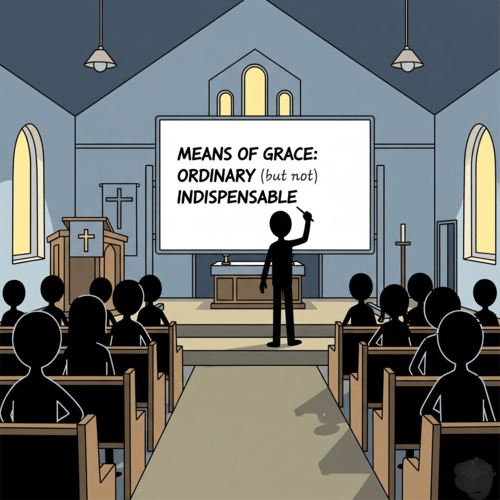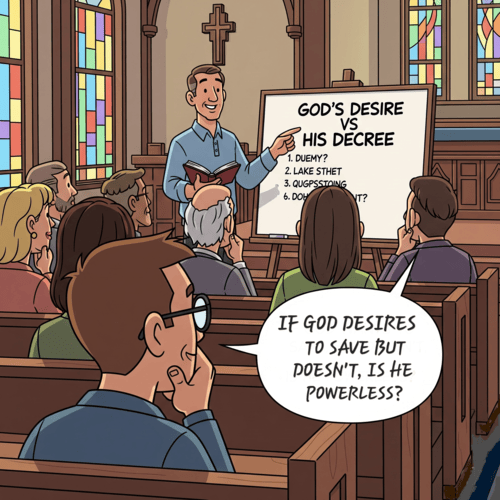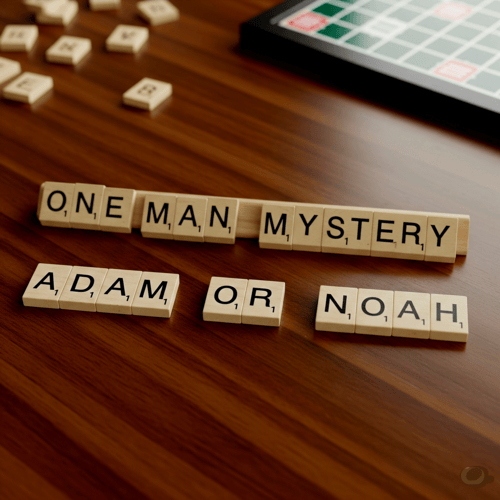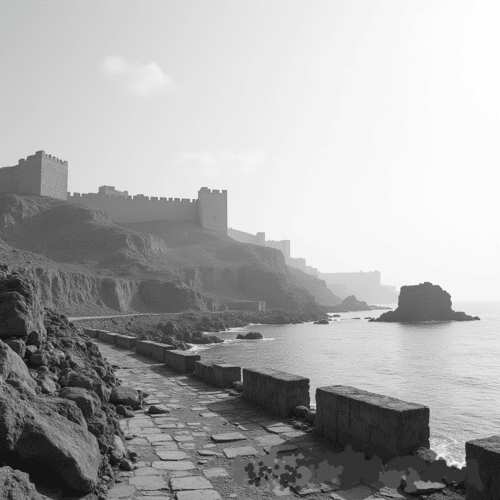Destruction of Tyre: A Testament To Fulfilled Bible Prophecy
The prophecy and subsequent destruction of Tyre—an ancient Phoenician city—is a compelling narrative in the Bible. The text stands as a remarkable testament to the intricate relationship between Bible prophecy and historical verifiability. This exploration delves into a prophecy so specific, so seemingly improbable, that its eventual fulfillment challenges even the most sceptical historian.
The city of Tyre, the jewel in the Ancient Mediterranean, was renowned for its wealth, strategic importance, and seemingly impregnable defences. Located in modern-day Lebanon, Tyre was a maritime powerhouse, a centre of trade and commerce that appeared invincible to contemporary observers. It was against this backdrop that the prophet Ezekiel made extraordinary predictions about the city’s fate—predictions that would unfold with astonishing precision over subsequent centuries.
Tyre: Its Historical Context
As a centre of Phoenician culture, Tyre was a powerhouse of economic and cultural influence. It spread its language, art, and the alphabet across the Mediterranean, leaving a lasting legacy. Tyre also played a significant role in biblical history, as its king, Hiram, assisted Solomon in building the Temple (1 Kings 5).
In Ezekiel 26:3-14, the prophecy is both detailed and dramatic. The prophet declares that multiple nations would attack Tyre, that the city would be destroyed and scraped down to bare rock, and that its stones and timber would be thrown into the sea. Most remarkably, Ezekiel predicted Tyre would never be rebuilt—a claim that seemed utterly impossible given the city’s prominence and resilience.
The specificity of these prophecies is what makes them so extraordinary. At a time when Tyre was at the height of its power, the idea of its complete destruction would have seemed ludicrous. The city was protected by massive walls, surrounded by water, and had a reputation for withstanding sieges. Yet, Ezekiel’s prophecy suggested not just defeat, but total annihilation.
Historical Fulfillment: A Two-Stage Destruction
The fulfillment of this prophecy occurred in two stages, each remarkable in its own right:
- Nebuchadnezzar’s Siege: The first phase of destruction came with Nebuchadnezzar’s thirteen-year siege (585-573 BCE). While this siege partially fulfilled the prophecy, it did not complete all the predicted elements. The Babylonian king, whom Ezekiel does name, besieged the city, but did not entirely destroy it—setting the stage for a more complete fulfillment.
- Alexander the Great’s Conquest: The truly astonishing fulfillment came with Alexander the Great’s conquest in 332 BCE. Facing a city split between an island fortress and a mainland settlement, Alexander employed unprecedented siege tactics. When the mainland city resisted, he did something extraordinary: he constructed a land bridge using the very stones and timber of the existing city, literally throwing the materials into the sea—precisely as Ezekiel had prophesied centuries earlier.
Alexander’s siege was brutal and complete. The city was razed, its population massacred or enslaved, and its legendary walls—once considered impenetrable—were systematically dismantled. The prophecy of scraping the city down to bare rock was fulfilled with chilling accuracy.
Archaeological Verification
Modern archaeological investigations have provided remarkable corroboration of these biblical and historical accounts. Excavations at the site of ancient Tyre have revealed layers of destruction consistent with Bible narratives. The physical evidence—burnt layers, demolished structures, and the geological transformation of the landscape—align remarkably well with the prophetic description.
Historical records from Greek and Phoenician sources further substantiate these findings. Multiple independent accounts confirm the city’s destruction and its subsequent diminished status—a stark contrast to its previous glory.
Probability and Implications
To appreciate the remarkable nature of Ezekiel’s prophecy, we must consider the probability of its fulfilment by sheer coincidence.
Complexity of the Prophecy: Ezekiel’s prophecy is not a vague prediction. It includes multiple specific details: The attackers—Tyre would be besieged by “many nations” (Ezekiel 26:3). The method—Debris from the city would be thrown into the sea to destroy the island (v. 12). The outcome—The city would become a “bare rock” and would “never be rebuilt” (v. 14).
Independent Fulfilments: The prophecy required events involving multiple independent actors across centuries: Nebuchadnezzar’s siege fulfilled the initial stage. Alexander the Great’s conquest completed the destruction in a manner unforeseen at the time of the prophecy. The city’s long-term desolation ensured the prophecy remained valid.
Estimating the Odds: For argument’s sake, let’s assign conservative probabilities to each event: Tyre attacked by a powerful empire (e.g., Babylon): 1 in 5 (20%). The island fortress destroyed with rubble from the mainland: 1 in 100 (1%). The city would never regain its former glory: 1 in 50 (2%).
The likelihood of such precise predictions being mere coincidence is astronomically low. The specific details—multiple nations attacking, complete destruction, throwing stones into the sea, and the prediction of never being fully rebuilt—create a convergence of prophetic elements that challenge conventional historical understanding. This means there was a 1 in 25,000 chance that Ezekiel’s prophecy could have been fulfilled by random historical events.
Conclusion
The destruction of Tyre represents more than just a historical footnote. It’s a profound testament to the remarkable precision of Bible prophecy. From an apparently invincible maritime power to a site of archaeological ruins, Tyre’s story offers a compelling, historically verifiable narrative that continues to challenge scholars.
Theologically, this event reinforces the reliability of Scripture, the certainty of God’s judgment, and the urgency of responding to His call. Tyre’s fate is a reminder that God’s word never fails. For believers, it strengthens our confidence in His promises. For sceptics, it challenges us to reconsider the evidence for the Bible’s authenticity. As we reflect on Tyre’s story, may it inspire awe in us for the God who rules over history and invites us to trust in Him.
Tyre: A Testament to Fulfilled Bible Prophecy—Related FAQs
How specific was Ezekiel’s prophecy about Tyre? Ezekiel’s prophecy about Tyre was extraordinarily detailed, predicting that multiple nations would attack the city, that it would be completely destroyed, and that its stones would be thrown into the sea. He specifically prophesied that the city would be scraped down to bare rock and would never be fully rebuilt. Remarkably, these predictions were fulfilled with stunning precision through Nebuchadnezzar’s siege and later by Alexander the Great’s conquest, which involved literally using the city’s own stones to build a land bridge.
- What archaeological evidence supports the prophecy of Tyre’s destruction? Archaeological excavations have revealed multiple layers of destruction at the site of ancient Tyre, corroborating biblical and historical accounts. Burnt layers, demolished structures, and significant landscape transformations align with the prophetic description. Independent historical records from Greek and Phoenician sources further confirm the city’s dramatic fall from its previous status as a powerful maritime centre.
How did the prophecy about Jericho’s destruction manifest? The biblical prophecy about Jericho’s destruction, found in the Book of Joshua, predicted that the city would be completely destroyed and cursed, with a specific warning that anyone who rebuilt it would lose their firstborn and youngest son. Remarkably, archaeological evidence shows the city was destroyed around 1400 BCE, exactly as described, and historical records confirm that when it was later rebuilt by Hiel the Bethelite (around 860 BCE), he lost his firstborn and youngest sons, precisely as the prophecy stated.
What makes the Bible’s prophecy about Nineveh’s destruction significant? The prophet Nahum provided detailed predictions about Nineveh’s fall, describing its complete destruction and the methods of its conquest. He specifically prophesied that the city would be destroyed by flooding and that it would become a desolate place. Historical and archaeological evidence confirms that Nineveh was indeed conquered by a coalition of Babylonians and Medes in 612 BCE, with flooding playing a crucial role in its destruction, exactly as predicted.
- How do scholars interpret the statistical probability of these prophecies? Biblical scholars and statistical analysts have examined the probability of such precise predictions occurring by chance, finding the likelihood to be astronomically low. The specificity of details—including exact methods of destruction, involvement of multiple nations, and long-term consequences—makes random coincidence extremely improbable. These analyses suggest the prophecies represent something beyond mere historical speculation.
- Were these prophecies written after the events occurred? Archaeological and textual evidence strongly supports that these prophecies were written before their fulfillment. The Dead Sea Scrolls and other ancient manuscripts demonstrate that these prophetic texts predated the historical events they described. Scholarly dating of these texts confirms their authenticity and challenges alternative explanations of post-event writing.
Why did Ezekiel prophesy judgment against Tyre? Has Ezekiel’s prophecy of desolation been fulfilled in modern Tyre? Ezekiel 26 records God’s judgment on Tyre because of its arrogance and rejoicing over Jerusalem’s fall. Tyre’s pride, exploitation, and spiritual rebellion against God made it an example of divine justice, showcasing that no city or power can withstand God’s authority. Modern Tyre exists as a small Lebanese town, but the ancient mainland and island cities remain desolate and uninhabited as Ezekiel predicted. This aligns with the prophecy’s focus on the destruction of the original city’s power and prominence.
Tyre: A Testament to Fulfilled Bible Prophecy—Our Related Posts
Editor’s Pick

The Ordinary Means of Grace: Why Are They Indispensable?
9ORDINARY MEANS FOR EXTRAORDINARY TRANSFORMATION What if God's most powerful work in believers' lives happens through the most ordinary activities? [...]

Is the Bible God’s Word? Or Does It Only Contain God’s Word?
The authority of Scripture stands at the crossroads of modern Christianity. While some argue the Bible merely contains God’s Word [...]

Will We Remember This Life in Heaven? What Isaiah 65:17 Means
"Will I remember my spouse in heaven? My children? Will the joy we shared on earth matter in eternity?" These [...]

From Empty to Overflow: The Abundant Life Jesus Promised
(AND WHY YOU SHOULDN’T SETTLE FOR LESS) We're surviving, but are we thriving? If we're honest, there's a gap between [...]

What Does Jesus Save Us From?
THREE BIBLE TRUTHS ABOUT SALVATION "Jesus saves." We’ve seen it on bumper stickers, heard it shouted at sporting events, maybe [...]

If God Wants Everyone Saved, Why Aren’t They?
^THE REFORMED VIEW ON GOD’S DESIRE VS HIS DECREE The question haunts every believer who has lost an unbelieving loved [...]

The One Man Mystery in Acts 17:26: Is It Adam Or Noah?
When the Apostle Paul stood before the philosophers at Mars Hill, he delivered an insightful statement about human unity: “And [...]

Megiddo Or Jerusalem: Where Did King Josiah Die?
Recent archaeological discoveries at Tel Megiddo continue to reveal evidence of Egyptian military presence during the late 7th century BC, [...]

Losing Your Life Vs Wasting It: How Are the Two Different?
AND WHY DID JESUS PRAISE THE FORMER? Jesus spoke one of the most perplexing statements in Scripture: “For whoever wants [...]

Can Christians Be Demon Possessed? What the Bible Teaches
Perhaps you’ve witnessed disturbing behavior in a professing Christian, or you’ve struggled with persistent sin and wondered if something darker [...]





